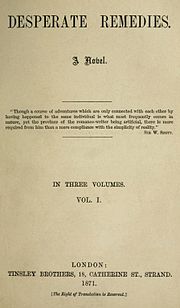
Sense and Sensibility is the first novel by the English author Jane Austen, published in 1811. It was published anonymously; By A Lady appears on the title page where the author's name might have been. It tells the story of the Dashwood sisters, Elinor and Marianne as they come of age. They have an older half-brother, John, and a younger sister, Margaret.

Tess of the d'Urbervilles: A Pure Woman is the twelfth published novel by English author Thomas Hardy. It initially appeared in a censored and serialised version, published by the British illustrated newspaper The Graphic in 1891, then in book form in three volumes in 1891, and as a single volume in 1892. Although now considered a major novel of the 19th century, Tess of the d'Urbervilles received mixed reviews when it first appeared, in part because it challenged the sexual morals of late Victorian England.

The History of Tom Jones, a Foundling, often known simply as Tom Jones, is a comic novel by English playwright and novelist Henry Fielding. It is a Bildungsroman and a picaresque novel. It was first published on 28 February 1749 in London and is among the earliest English works to be classified as a novel. It is the earliest novel mentioned by W. Somerset Maugham in his 1948 book Great Novelists and Their Novels among the ten best novels of the world.
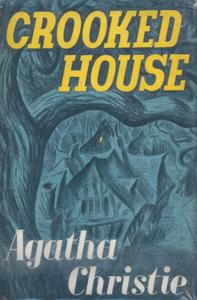
Crooked House is a work of detective fiction by Agatha Christie first published in the US by Dodd, Mead and Company in March 1949 and in the UK by the Collins Crime Club on 23 May of the same year.

Far from the Madding Crowd is the fourth published novel by English author Thomas Hardy; and his first major literary success. It was published on 23 November 1874. It originally appeared anonymously as a monthly serial in Cornhill Magazine, where it gained a wide readership.

The Mayor of Casterbridge: The Life and Death of a Man of Character is an 1886 novel by the English author Thomas Hardy. One of Hardy's Wessex novels, it is set in a fictional rural England with Casterbridge standing in for Dorchester in Dorset where the author spent his youth. It was first published as a weekly serialisation from January 1886.
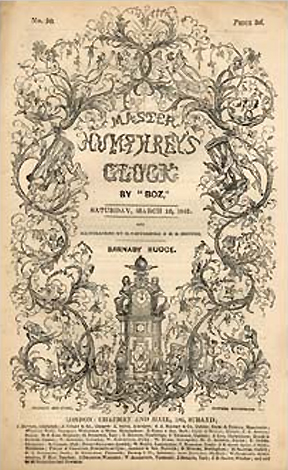
Barnaby Rudge: A Tale of the Riots of Eighty is a historical novel by English novelist Charles Dickens. Barnaby Rudge was one of two novels that Dickens published in his short-lived (1840–1841) weekly serial Master Humphrey's Clock. Barnaby Rudge is largely set during the Gordon Riots of 1780.
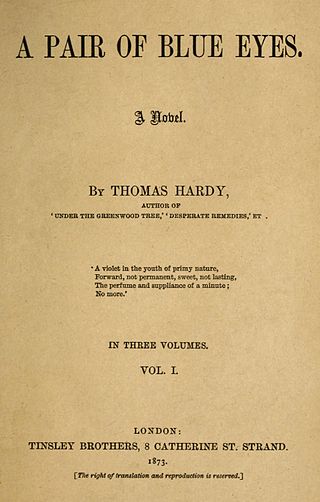
A Pair of Blue Eyes is the third published novel by English author Thomas Hardy, first serialised between September 1872 and July 1873, in Tinsley's Magazine, and published in book form in 1873. It was Hardy's third published novel, and the first not published anonymously. Hardy included it with his "romances and fantasies".
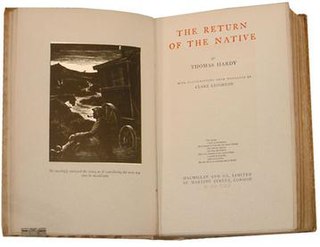
The Return of the Native is the sixth published novel by English author Thomas Hardy. It first appeared in the magazine Belgravia, a publication known for its sensationalism, and was presented in twelve monthly installments from 9 January to 19 December 1878. Because of the novel's controversial themes, Hardy had some difficulty finding a publisher; reviews, however, though somewhat mixed, were generally positive. In the twentieth century, The Return of the Native became one of Hardy's most popular and highly regarded novels.

Eliza Haywood, born Elizabeth Fowler, was an English writer, actress and publisher. An increase in interest and recognition of Haywood's literary works began in the 1980s. Described as "prolific even by the standards of a prolific age", Haywood wrote and published over 70 works in her lifetime, including fiction, drama, translations, poetry, conduct literature and periodicals. Haywood today is studied primarily as one of the 18th-century founders of the novel in English.

Thomas Neill Cream, also known as the Lambeth Poisoner, was a Scottish-Canadian medical doctor and serial killer who poisoned his victims with strychnine. Cream murdered up to ten people in three countries, targeting mostly lower-class women, sex workers and pregnant women seeking abortions. He was convicted and sentenced to death, and was hanged on 15 November 1892.

The Listerdale Mystery is a short story collection written by Agatha Christie and first published in the UK by William Collins and Sons in June 1934. The book retailed at seven shillings and sixpence (7/6). The collection did not appear in the US; however, all of the stories contained within it did appear in other collections only published there.

Taken at the Flood is a work of detective fiction by British writer Agatha Christie, first published in the US by Dodd, Mead and Company in March 1948 under the title of There is a Tide. .. and in the UK by the Collins Crime Club in the November of the same year under Christie's original title. The US edition retailed at $2.50 and the UK edition at eight shillings and sixpence (8/6). It features her famous Belgian detective, Hercule Poirot, and is set in 1946.

A Pocket Full of Rye is a work of detective fiction by Agatha Christie and first published in the UK by the Collins Crime Club on 9 November 1953, and in the US by Dodd, Mead & Co. the following year. The UK edition retailed at ten shillings and sixpence (10/6) and the US edition at $2.75. The book features her detective Miss Marple.
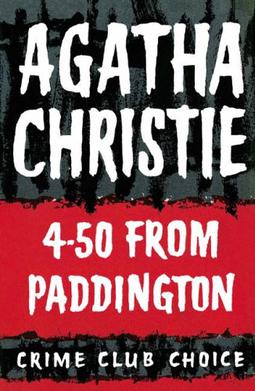
4.50 from Paddington is a detective fiction novel by Agatha Christie, first published in November 1957 in the United Kingdom by Collins Crime Club. This work was published in the United States at the same time as What Mrs. McGillicuddy Saw!, by Dodd, Mead. The novel was published in serial form before the book was released in each nation, and under different titles. The US edition retailed at $2.95.
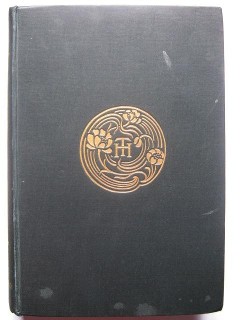
The Well-Beloved: A Sketch of a Temperament is the fourteenth and final published novel by English author Thomas Hardy. It was written before Jude the Obscure, the last novel written by Thomas Hardy, but was published after it, in 1897. The novel spans forty years, and follows Jocelyn Pierston, a celebrated sculptor who attempts to create in stone the image of his ideal woman, while he tries also to find her in the flesh.

Sense and Sensibility and Sea Monsters (2009) is a parody novel by Ben H. Winters, with Jane Austen credited as co-author. It is a mashup story containing elements from Jane Austen's 1811 novel Sense and Sensibility and common tropes from sea monster stories. It is the thematic sequel to another 2009 novel from the same publisher called Pride and Prejudice and Zombies. It was first published by Quirk Books on September 15, 2009.

Lady Athlyne is a romance novel by Bram Stoker, written in 1908. It was published one year before the release of Stoker's The Lady of the Shroud.

The Monogram Murders is a 2014 mystery novel by British writer Sophie Hannah featuring characters created by Agatha Christie. It is the first in Hannah's series of Hercule Poirot books, continuation novels sanctioned by the estate of Agatha Christie. The novel was followed by Closed Casket (2016), The Mystery of Three Quarters (2018), and The Killings at Kingfisher Hill (2020).
